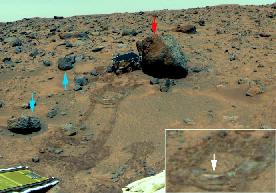This image shows different classes of rocks explored by the Rover.
Click on image for full size
Image from: JPL/NASA
Classes of Martian Rock
The rocks explored by the Mars Pathfinder's Rover have been classified into three kinds by scientists analysing the Rovers' findings. Potentially the rocks may all be the same kind of rock, all having an origin at a rocky outcropping 30 kilometers away. Chemical analysis of the exterior crust of the rocks suggests that they may all be nearly identical. On the other hand, the rocky exteriors may all be covered with what scientists call a "weathering rind", so the true nature of the rocks may be hidden from the Rover's instruments.
Nevertheless, scientists can see three basic differences in these rocks. These differences help them figure out more about weathering processes on Mars and where the soils surrounding the rocks may come from. The three classes are:
- dark,
- bright, redder than the dark rock, but not at red as pink
- pink, perhaps covered with a red substance which has an iron oxide (rust) component
Different classes are pointed out in the image to the left. Green arrows show dark rocks, the white arrow shows pink rock.
Barnacle Bill was a dark rock, suggesting that it may be a
basalt.
Scooby Doo was a pink rock suggesting that it may be composed of drift material which became cemented together.
The rocks were also classified into two groups according to how they weathered. Differing weathering properties may indicate differing conditions of deposition; impact i.e. coming from a crater impact, or fluvial i.e. coming from flowing water.
You might also be interested in:
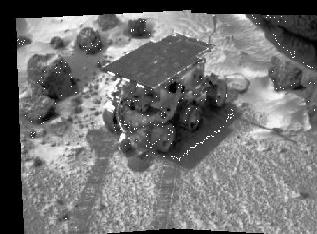
One of the measurement objectives of the Mars Pathfinder mission was the examination of the composition and structure of the soil. As the Rover traversed the surface exploring the rocks of Mars, it also
...more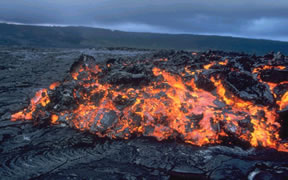
Basalt is a hard, black extrusive igneous rock. It is the most common type of rock in the Earth's crust and it makes up most of the ocean floor. The prevalence of dark minerals such as pyroxene and olivine
...more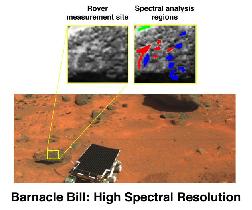
The rocks explored by the Mars Pathfinder's Rover are classified into two groups according to how they weather. Differing weathering properties may indicate differing conditions of deposition because impact
...more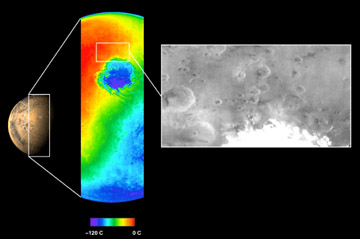
The Mars Odyssey was launched April 7, 2001, from Cape Canaveral Air Force Station in Florida. After a six-month, 285 million-mile journey, the Odyssey arrived at Mars on October 24, 2001 (02:30 Universal
...more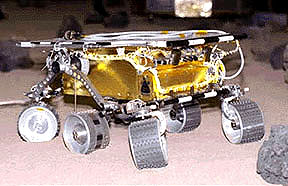
The Mars 2005 mission is still in the planning stages. It is set to launch in the year 2005.
...more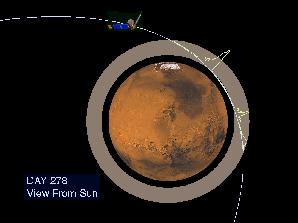
On September 12, 1997, the Mars Global Surveyor successfully entered a highly elliptical orbit around Mars. To get into the near-circular, near-polar, low-altitude orbit necessary to map the surface of
...more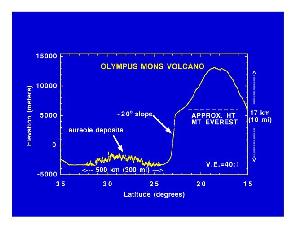
Mars Global Surveyor carries an instrument which measures the altitudes of things. The instrument is called an altimeter, or "altitude-meter". The graph to the left shows the results returned from Mars
...more


